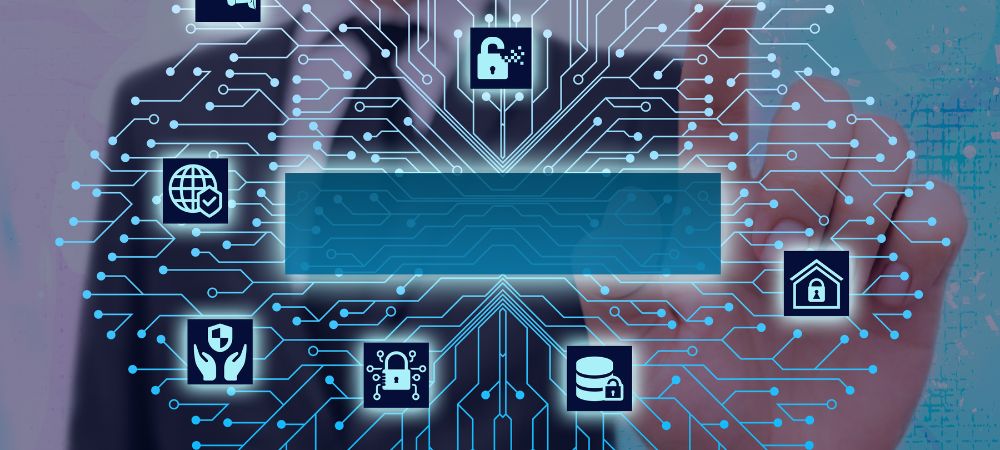

Oh boy, where to start with data security in operating systems? It's a big deal, especially when you dive into the world of encryption and decryption. You know, most people don't realize just how crucial it is until something goes wrong. For additional information click on it. But let's not get ahead of ourselves.
First off, operating systems are like the backbone of our digital lives. They're running everything from your smartphone to those fancy servers that keep websites up and running. If they're not secure, well, we're all in a heap of trouble. And here's where encryption and decryption come into play.
So, what's encryption anyway? It's basically scrambling data so only authorized folks can make sense of it. Decryption is unscrambling it back into its original form. Simple enough, right? Well, not really. There's a lot more going on under the hood.
We can't ignore that without proper encryption mechanisms built into an OS, sensitive information is at risk - think personal emails or financial transactions! Just imagine if someone got their hands on your banking details because some system didn't bother to encrypt them properly. Yikes!
Now let me tell ya', it's not just about throwing some random code together and calling it a day either. Encryption algorithms need to be robust 'cause hackers aren't getting dumber; they're getting smarter every day! The OS has gotta' stay one step ahead or we're toast.
But hey, don't think for a second that only tech geeks should care about this stuff. When you download an app or update your software, you're trusting that the developers took data security seriously – including using strong encryption methods to protect your info. If they didn't? Oh man...you'd probably regret hitting that download button!
And here's another kicker – even encrypted data isn't foolproof if decryption keys aren't handled properly within the OS framework itself! No point locking up something valuable if anyone can find the key lying around somewhere obvious like under the doormat (metaphorically speaking).
One thing's certain though: neglecting data security measures such as encryption/decryption would be disastrous for both users and organizations alike-nobody wants their private information exposed left right center because someone decided securing an operating system wasn't worth all effort required!
In conclusion (finally!), understanding importance behind securing data through effective use of these processes ensures peace-of-mind knowing our digital lives remain protected against prying eyes out there waiting pounce upon any vulnerability they might discover lurking within poorly secured systems…so let's give credit where due ensuring utmost dedication towards maintaining highest standards possible when comes safeguarding precious electronic assets entrusted unto care modern-day technology providers everywhere!
Encryption and decryption are crucial concepts in the realm of cybersecurity, protecting data from prying eyes. One can't talk about encryption without delving into the basic concepts of symmetric and asymmetric encryption. These two methods are like night and day, offering distinct advantages and disadvantages based on their unique characteristics.
Symmetric encryption ain't complicated; it's like using a single key to lock and unlock your front door. In this method, the same key is used for both encrypting and decrypting data. It's fast – really fast! Speed is its primary advantage, making it ideal for encrypting large amounts of data quickly. However, there's a catch: both parties need to have access to that same key securely. If someone intercepts this key during transmission, all bets are off – they can decrypt everything just like that!
Now, asymmetric encryption takes a different route altogether. Instead of one key, it uses a pair of keys: a public key and a private key. The public key can be shared with anyone; it's not a secret at all. But keep that private key close! Data encrypted with the public key can only be decrypted by the corresponding private key, and vice versa. This makes asymmetric encryption highly secure because even if someone gets hold of your public key, they can't do much without the private one.
But hey, it's not all sunshine and rainbows here either. Asymmetric encryption is slower than its symmetric counterpart due to complex mathematical operations involved in generating those keys. So while it's incredibly secure for things like digital signatures or secure email communication where speed isn't the top priority; for bulk data encryption – forget about it!
In practice, we often use these two types together in what's called hybrid encryption to get around their individual limitations but leveraging their strengths instead. For instance, you'd use asymmetric encryption to securely exchange a symmetric session key which then encrypts actual data efficiently.
So there you have it – symmetric vs asymmetric encryption in a nutshell! Both methods have their own place in our digital world depending on what you're trying to achieve whether its speed or security ain't no one-size-fits-all solution here.
The most extensively used os, Microsoft Windows, was first launched in 1985 and currently powers over 75% of computer worldwide.
The very first antivirus software was developed in 1987 to deal with the Brain infection, marking the start of what would certainly come to be a major industry within software advancement.
Salesforce, released in 1999, spearheaded the concept of supplying business applications using a easy internet site, leading the way in Software program as a Service (SaaS) designs.
Cloud computer obtained appeal in the late 2000s and has dramatically transformed IT infrastructures, with major companies like Amazon Internet Services, Microsoft Azure, and Google Cloud leading the marketplace.
Alright, so let's dive into the topic of "What is an Operating System and How Does It Work?" and see how we can integrate artificial intelligence into it.. First off, an operating system (OS) is kinda like the backbone of your computer.

Posted by on 2024-07-07
Inter-process communication, or IPC, plays a crucial role in any operating system's kernel.. The kernel is the core component of an OS that manages and facilitates interactions between hardware and software.

Posted by on 2024-07-07
Virtual memory, in modern operating systems, is a fascinating concept that plays a crucial role in how computers manage and allocate memory.. At its core, virtual memory allows an application to believe it has contiguous and limitless memory at its disposal, while in reality, the physical memory (RAM) might be much smaller.

Posted by on 2024-07-07
Switching to a new operating system can be both exciting and daunting.. It's not something you wanna rush into without a bit of planning, trust me.

Posted by on 2024-07-07
Encryption and decryption are crucial components of modern operating systems, ensuring the security of data by preventing unauthorized access. Various common encryption algorithms are used in operating systems to safeguard sensitive information. These algorithms have become indispensable in a world where cyber threats loom large.
One widely used encryption algorithm is Advanced Encryption Standard (AES). It's kinda like the gold standard for securing data. AES is known for its efficiency and speed, which makes it popular among both developers and users. Its versatility allows it to be implemented in different contexts, from encrypting files on your computer to securing communications over the internet. You won't find many other algorithms that come close to matching AES's balance of security and performance.
Another common encryption algorithm you'll encounter is RSA (Rivest-Shamir-Adleman). Unlike AES, which is a symmetric key algorithm, RSA uses asymmetric cryptography – meaning it employs a pair of keys: one public and one private. The public key can be shared openly but the private key remains confidential. This approach ensures that even if someone intercepts the public key, they can't decrypt the data without possessing the corresponding private key. It's mostly used for securing sensitive data transmitted over networks but not so much for encrypting large amounts of data because it's slower compared to symmetric algorithms.
Oh! And we shouldn't forget about Triple DES (3DES), even though it's kinda falling out of favor these days due to advancements in computing power making it less secure than newer alternatives like AES. 3DES applies the older Data Encryption Standard (DES) cipher algorithm three times to each data block, providing an extra layer of security compared to its predecessor DES alone.
Blowfish is another notable mention; it's particularly useful in situations where high speed and resource efficiency are critical considerations. Blowfish has been adopted by various software applications due to its flexibility – users can define their own key lengths up to 448 bits, allowing them to balance between security needs and system performance constraints.
But hey, let's not kid ourselves! No encryption algorithm is foolproof or forever invulnerable. As computational capabilities advance and new vulnerabilities are discovered, what once was considered secure may no longer hold up under scrutiny. Therefore, ongoing research and development into new encryption methods remains essential.
In conclusion, while there ain't no single "best" encryption algorithm suitable for all purposes within an operating system environment, commonly employed ones like AES, RSA, 3DES, and Blowfish provide robust options tailored towards varying needs – balancing factors such as security level required against processing power available. Ensuring our digital lives stay protected hinges on selecting appropriate tools from this arsenal wisely.


Cryptographic libraries and APIs (Application Programming Interfaces) play a quite pivotal role in the realm of encryption and decryption. Now, don't think that they're some magical entities you can't understand or use. They're essentially tools that make it easier for developers to implement security features without having to be cryptography wizards themselves.
First off, let's talk about why we need these libraries and APIs in the first place. Encryption and decryption are processes used to protect sensitive information from prying eyes. Without them, our data would be as exposed as an open book – not exactly what you'd want for your personal messages or financial transactions, right? But implementing these processes is no walk in the park; they require a deep understanding of complex algorithms and protocols.
That's where cryptographic libraries come into play. They provide pre-written code for various encryption algorithms like AES (Advanced Encryption Standard), RSA (Rivest-Shamir-Adleman), and many others. Imagine if every developer had to write their own encryption algorithm from scratch – we'd end up with a lot of buggy, insecure systems! These libraries help avoid that mess by giving us tried-and-tested methods.
And then there's the APIs which make interacting with these libraries much simpler. Instead of diving head-first into lines of incomprehensible code, developers can use straightforward commands provided by the API to achieve their goals. For example, if you wanna encrypt some text using AES, it's often just a matter of calling an `encrypt` function provided by the API with your plaintext and key as arguments.
Oh! And don't think it's just about making life easier for developers. Cryptographic APIs also ensure consistency across different applications and systems. This consistency is crucial because any slight deviation in how encryption is implemented can lead to vulnerabilities. You wouldn't want your encrypted data being compromised due to some minor difference in implementation between two systems now, would ya?
But let's not pretend everything's all sunshine and rainbows here; cryptographic libraries aren't foolproof either! Poorly designed or outdated ones can introduce vulnerabilities themselves! It's important for developers to stay updated on which libraries are recommended and regularly checked for security flaws.
Moreover, even though these tools simplify things considerably, they do not take away all responsibility from the developer's shoulders. Proper key management practices must still be followed rigorously because no amount of strong encryption will save you if your keys are poorly handled or exposed!
In conclusion - oops - I mean wrapping things up: Cryptographic libraries and APIs are essential allies in ensuring data security through encryption-decryption mechanisms while simplifying implementation complexities for developers who aren't necessarily experts in cryptography itself! However - always remember there's no substitute for good practices when it comes down protecting sensitive information effectively!
So next time you're marveling at how seamlessly secure communication happens online – give a nod (or perhaps even raise a toast) to those unsung heroes: cryptographic libraries & APIs!
Encryption and decryption ain't just fancy tech terms; they actually have real-world applications that touch our lives in ways we might not even notice. You'd be surprised how often these processes come into play, from the moment you send a text message to when you're shopping online.
First off, think about online banking. Without encryption, your financial information would be totally exposed to hackers. When you log in to check your balance or transfer money, your data gets encrypted so no one can intercept it. It's like sealing a letter in an envelope rather than sending a postcard for everyone to read.
Then there's messaging apps like WhatsApp and Signal. These platforms use end-to-end encryption to ensure that only the sender and recipient can read the messages. Imagine if anyone could peek into your private conversations! Encryption makes sure that's not happening.
But hey, let's talk about something more tangible: smart homes. Nowadays, lots of folks got devices connected to their home networks – from thermostats to security cameras. If these weren't secure, someone could easily hack into them and mess with your stuff or spy on you. Through encryption, all those signals are scrambled so outsiders can't make any sense of 'em.
Oh boy, don't get me started on government agencies! They've been using encryption forever for classified communications. During wars or sensitive operations, encrypted messages mean that even if enemies intercept them, they can't understand what's being said.
And it's not just big institutions; businesses also rely heavily on encryption. Companies store tons of sensitive data - customer info, trade secrets - you name it! If this data isn't properly encrypted, it's a goldmine for cybercriminals.
However (and here's where it gets tricky), there are cases where law enforcement argues that strong encryption hampers their ability to catch criminals. They say bad actors use encrypted channels too effectively sometimes making it darn near impossible for authorities to track them down without access keys-which most companies refuse to hand over because compromising encryption means undermining everyone's security.
On the flip side though (see what I did there?), some worry that giving governments backdoor access sets a dangerous precedent and threatens privacy rights overall-not just for criminals but for ordinary people as well!
In conclusion (phew!), while we may not always see or fully understand how encryption-decryption works behind-the-scenes - its importance cannot be overstated whether we're talking personal communication or national security! So next time you're typing out an email or logging into Netflix – remember: somewhere along those lines – cryptography's got ya covered!


When it comes to implementing encryption and decryption, there are a bunch of challenges folks run into. But hey, like anything else in tech, there's also some best practices that can help smooth things out. So let's dive into both sides of the coin.
First off, one major challenge is the complexity of managing keys. You wouldn't believe how easy it is for keys to get lost or stolen if they ain't handled properly. And once they're compromised, all that fancy encryption doesn't mean squat. Organizations need to have a solid key management strategy in place, but let's be real – it's easier said than done.
Another hurdle is performance. Encryption and decryption can be resource-intensive processes. If you're not careful, you could end up slowing down your system big time! Nobody wants their application grinding to a halt just because it's busy encrypting data. Balancing security with performance? That's a tough nut to crack.
And oh boy, don't even get me started on compliance issues. Different industries have different regulations when it comes to data protection and encryption standards. Keeping up with all those rules can feel like trying to hit a moving target sometimes! Miss one requirement and you could be facing hefty fines or worse.
Alrighty then, enough about challenges – let's switch gears and talk about best practices!
One key practice (pun intended) is using strong encryption algorithms. Weak algorithms might as well not even be there for all the good they do! Stick with standards like AES-256; they're tried-and-true and give you peace of mind that your data's safe from prying eyes.
Next up: automate where you can! Manual key rotation? No thanks! Automating this process reduces human error and helps ensure keys are updated regularly without anyone having to lift a finger.
Don't forget about access control either! Only authorized personnel should have access to encrypted data or the keys used for decryption. Implementing strict access controls minimizes the risk of insider threats – 'cause let's face it, sometimes the call's coming from inside the house!
Finally, stay informed! The world of cryptography isn't static; new vulnerabilities pop up all the time while old ones get patched up. Keep your systems updated and regularly review your security measures so you're not caught off guard by any sneaky exploits.
In conclusion - implementing encryption/decryption comes with its fair share of headaches but adhering to best practices makes life much easier (and safer!). Sure there's no magic bullet that'll solve every problem overnight but being proactive rather than reactive will definitely pay off in spades down line!
So yeah-it's tricky business but worth every bit effort put into making sure our digital lives remain secure... wouldn't ya agree?
Cryptography, a once futuristic concept, has now become fundamental to the security of operating systems. However, as technology advances at breakneck speed, future trends in cryptography within operating systems are emerging that promise both innovation and challenges. Let's dive into what's on the horizon for encryption and decryption.
Firstly, quantum computing is not just some sci-fi dream anymore; it's becoming a reality. And boy, isn't it shaking things up! Current encryption algorithms might not stand a chance against quantum computers. That means we're looking at Post-Quantum Cryptography (PQC) as a major trend. It ain't just about making stronger locks but rethinking how those locks work entirely.
Another trend that's getting attention is homomorphic encryption. This tech allows computations on encrypted data without needing to decrypt it first. Think about it: you could perform operations on sensitive information while keeping it secure all along! The implications for privacy are huge – no more worrying about data being exposed during processing. But hey, let's not kid ourselves; implementing this on a large scale is easier said than done.
Blockchain technology isn't going anywhere either – its decentralized nature could revolutionize how operating systems handle encryption keys and authentication processes. Instead of relying on centralized servers that can be hacked or fail, why not distribute trust across many nodes? It's kinda like putting your eggs in multiple baskets – less risk if one breaks!
But don't get too comfortable thinking these advancements will make life easy-peasy. There's always a flip side to technological progress: new vulnerabilities and attack vectors come into play too. For instance, side-channel attacks exploit physical properties of hardware to extract cryptographic keys – something traditional software-level defenses aren't designed to handle.
Machine learning also plays an intriguing role here – both as an ally and adversary. On one hand, ML algorithms can identify patterns in data traffic indicating potential breaches before they happen (how cool is that?). On the other hand, hackers can use ML tools to crack codes faster than ever before.
And oh my goodness, let's talk about zero-trust architectures! Instead of assuming inside-the-perimeter activities are safe by default (which honestly sounds naive nowadays), every single action gets scrutinized rigorously regardless of its origin point-no exceptions made whatsoever!
Not everything looks rosy though; integrating these cutting-edge technologies with existing infrastructure ain't gonna be smooth sailing folks!. Many organizations struggle already juggling various legacy systems alongside new implementations-they're certainly not ready yet for such drastic shifts overnight!
In conclusion then: future trends in cryptography within operating systems revolve around adapting our security measures against emerging threats while embracing novel innovations like PQC or homomorphic techniques among others mentioned above.. But let's remember nothing comes without trade-offs-it's crucial balancing act between robust protection & practical usability amidst rapidly evolving digital landscape... So yeah stay tuned because future holds lots surprises ahead indeed!!
